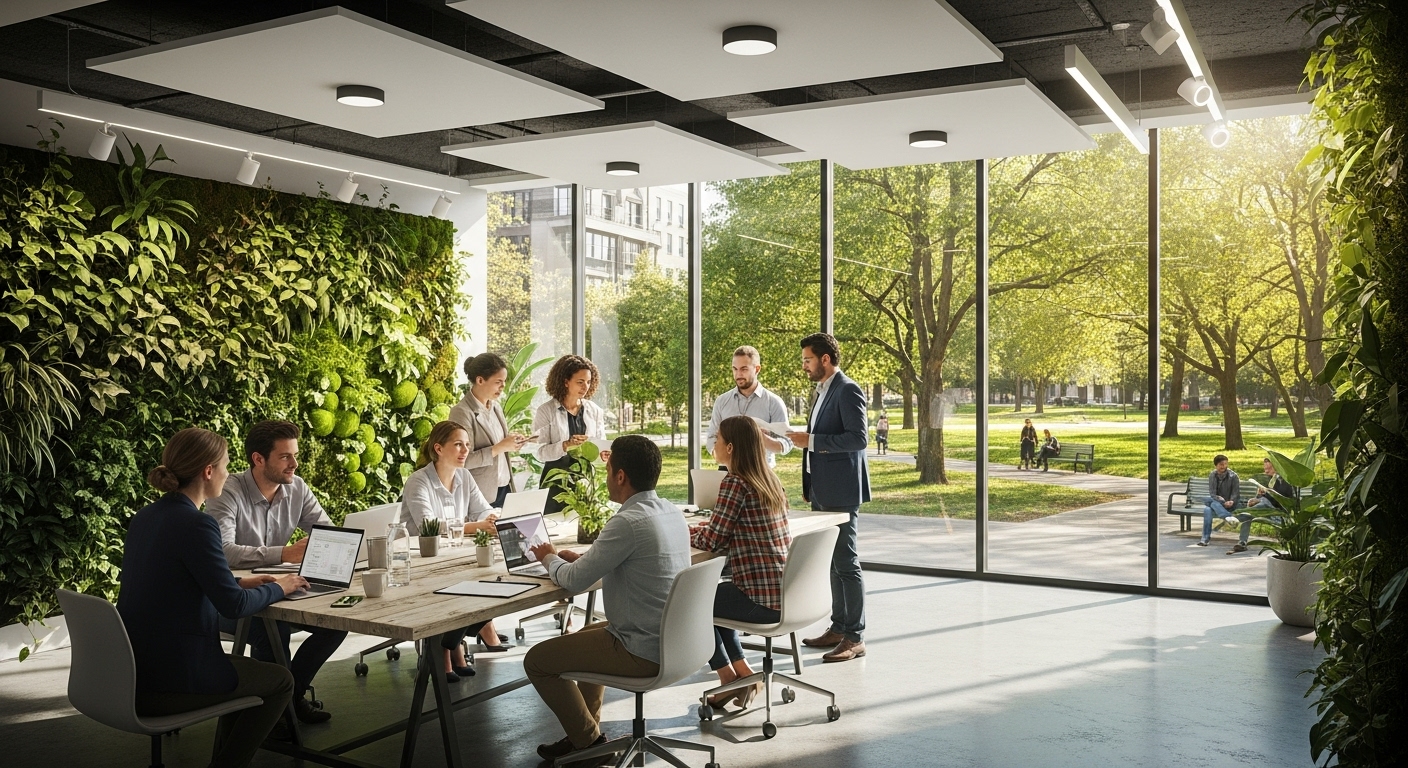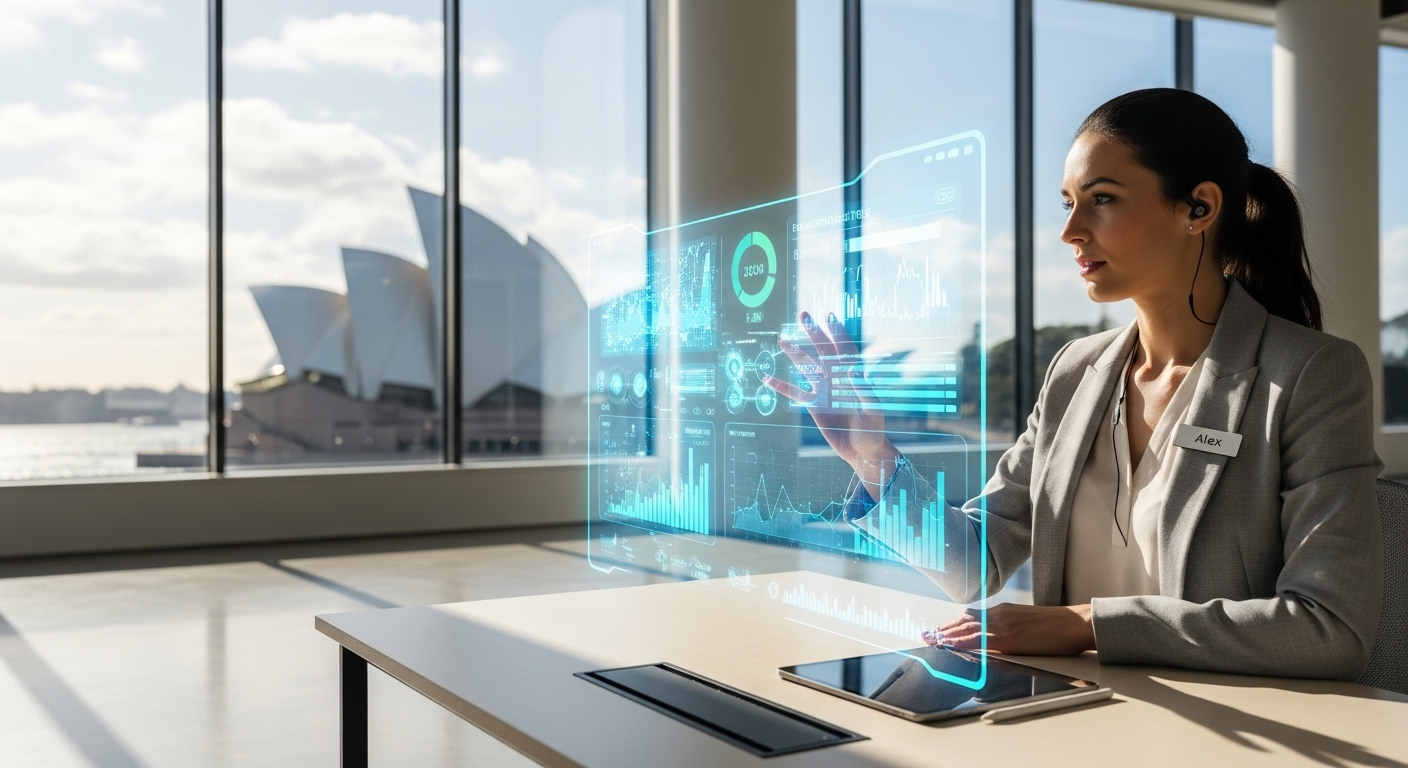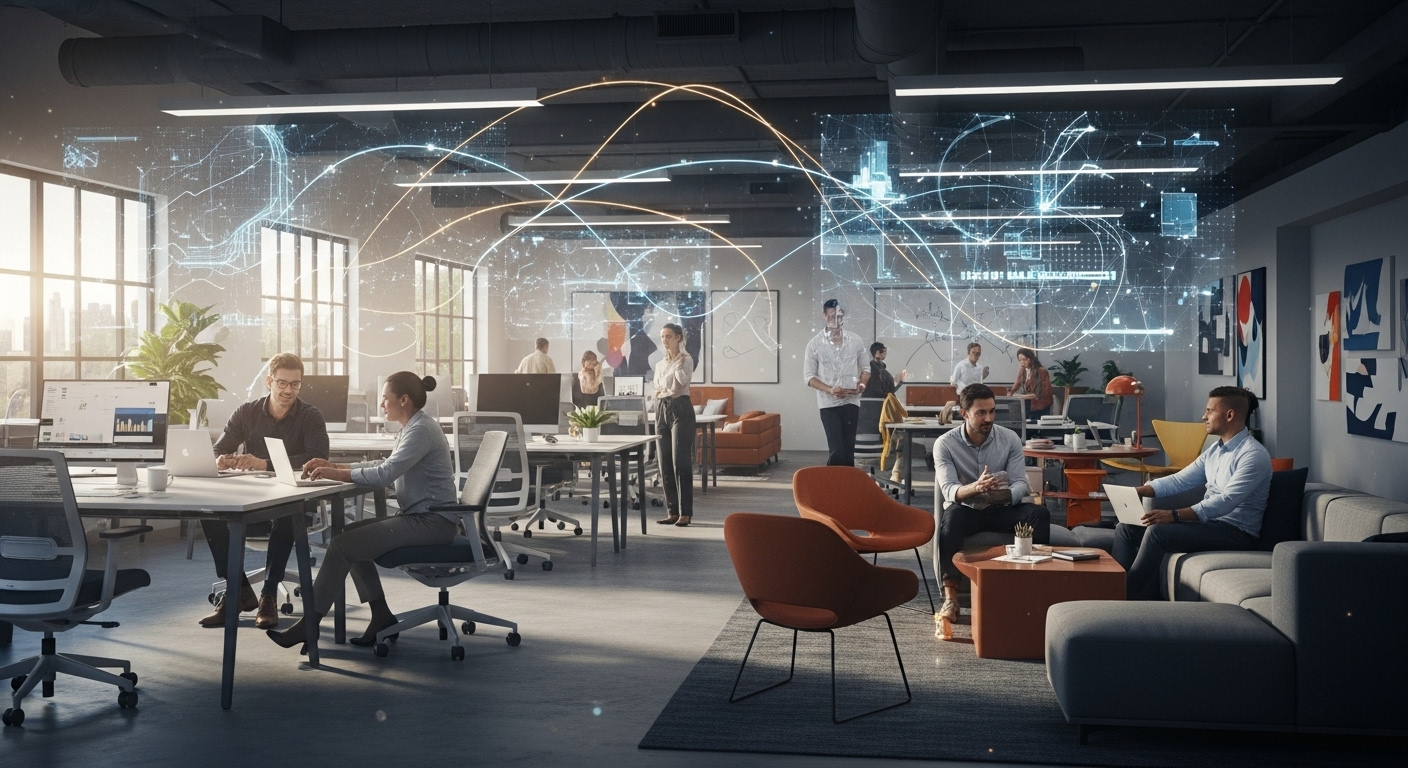In today’s competitive landscape, the concept of a sustainable workspace is undergoing a radical transformation. It’s no longer about placing a few recycling bins in the breakroom or earning a basic certification. Instead, leading organizations are recognizing that a truly sustainable office is a complex, integrated eco-system where design, technology, and human-centric policies converge. This holistic approach moves beyond mere corporate responsibility to become a powerful driver of competitive advantage. Recent data shows that a significant majority of millennial and Gen Z employees prioritize sustainability when choosing an employer, making the workplace environment a critical tool in the war for talent. This article will explore the Eco-System Advantage, breaking down how a strategically designed sustainable workspace does more than just help the planet—it attracts purpose-driven professionals, fosters a culture of innovation, and builds a foundation for resilient, long-term growth. We will delve into the core components of this eco-system, from biophilic design to the circular economy, and demonstrate how they synergize to create tangible business value.
Beyond Greenwashing: Defining the Modern Sustainable Eco-System
The term ‘sustainable workspace’ has often been diluted, associated with superficial gestures that lack deep impact. To truly harness the Eco-System Advantage, leaders must shift their perspective from a checklist of green features to a holistic, integrated system. This modern sustainable eco-system is built on the synergy of three core pillars: human well-being, resource stewardship, and intelligent performance. It’s a framework where every element is interconnected, creating a virtuous cycle of benefits. For instance, a biophilic design that incorporates natural light and plants doesn’t just improve aesthetics; it enhances employee cognitive function and mental health (human well-being). This same design reduces the need for artificial lighting, which lowers energy consumption (resource stewardship). When layered with smart technology, such as IoT sensors that adjust lighting based on natural availability and occupancy, the system optimizes itself for peak efficiency (intelligent performance). This interconnectedness is the defining characteristic that separates a true eco-system from isolated initiatives. Frameworks like the WELL Building Standard, which focuses on human health, and LEED (Leadership in Energy and Environmental Design), which centers on environmental impact, provide comprehensive roadmaps for creating these integrated spaces. The goal is to build an environment that is regenerative by nature—one that actively enhances the health of its occupants and the planet while simultaneously driving business objectives. This approach reframes sustainability from a cost center into a strategic investment in organizational resilience and vitality.
The Talent Magnet: Winning the War for Purpose-Driven Professionals
In the contemporary job market, a paycheck and benefits are table stakes. The new frontier in attracting and retaining top-tier talent lies in purpose and values—and a sustainable workspace is one of the most visible and authentic demonstrations of a company’s commitment. For Millennials and Gen Z, who will soon dominate the workforce, a company’s environmental and social impact are not just tie-breakers; they are primary decision-making factors. A workspace that embodies sustainability principles becomes a powerful tool for employer branding, speaking volumes before a candidate even sits down for an interview. Imagine a prospective employee walking into an office filled with natural light, clean air, and lush greenery, knowing the company has eliminated single-use plastics and runs on renewable energy. This experience creates an immediate, tangible connection to the company’s values. Beyond attraction, this eco-system is crucial for retention. A workspace designed for well-being—with superior air quality, access to nature, and non-toxic materials—directly contributes to lower stress levels, reduced absenteeism, and higher daily engagement.
As one leading HR strategist notes, “We no longer just sell jobs; we sell an experience and a mission. Our sustainable office isn’t just a building; it’s our most effective recruitment brochure and our most compelling argument for why talented people should build their careers with us.”
This investment in a healthy, purpose-driven environment pays dividends in loyalty, discretionary effort, and a thriving company culture where people are proud of where they work.
Biophilia as a Catalyst: Fueling Creativity and Cognitive Performance
While often seen as a design trend, biophilia—the innate human tendency to seek connections with nature—is a powerful scientific principle that can be leveraged to unlock significant gains in innovation and productivity. A biophilic workspace eco-system goes far beyond a few potted plants on a windowsill. It involves the deep integration of natural elements into the built environment. This includes maximizing natural light, providing direct views of nature, and using natural materials like wood, stone, and water. It also incorporates biomorphic forms and patterns in design, mimicking the shapes and textures found in the natural world. The impact of this approach on the human brain is profound and well-documented. Studies have consistently shown that environments rich in biophilic elements can reduce stress by lowering cortisol levels, improve focus, and enhance cognitive functions like memory and problem-solving. A 2018 Harvard T.H. Chan School of Public Health study found that occupants in green-certified buildings had 26% higher cognitive function scores. This cognitive boost is the direct fuel for innovation. When employees feel calmer, more focused, and less mentally fatigued, they have greater capacity for creative thinking and collaborative brainstorming. An office that feels like a sanctuary rather than a sterile box encourages mental exploration and reduces the cognitive load associated with artificial environments, freeing up mental resources for higher-order tasks. By systematically designing for our biological need for nature, companies can create a workplace that doesn’t just house innovation but actively catalyzes it.
The Circular Office: Designing for Resilience and Resourcefulness
The traditional, linear model of ‘take-make-dispose’ is not only environmentally damaging but also economically inefficient. The sustainable eco-system champions a much more resilient and resourceful model: the circular office. This concept fundamentally reimagines the lifecycle of everything within the workspace, from furniture and technology to daily consumables. The goal is to eliminate waste and keep materials in use for as long as possible. This goes far beyond basic recycling programs. A truly circular office starts with procurement, prioritizing furniture and equipment designed for disassembly, repair, and reuse. This ‘cradle-to-cradle’ approach ensures that at the end of a product’s life, its components can be repurposed into new products of equal or greater value, rather than being downcycled or sent to a landfill. Operationally, the circular office aggressively targets waste streams. This can include implementing a comprehensive composting program for all organic waste, eliminating single-use plastics in favor of reusable alternatives, and shifting to digital-first workflows to drastically reduce paper consumption. This commitment to resourcefulness builds significant operational resilience. By reducing dependence on virgin materials, companies can insulate themselves from volatile supply chains and rising resource costs. Furthermore, a lean, low-waste operation is inherently more efficient and cost-effective. The circular office is the physical manifestation of a resourceful and forward-thinking corporate culture, demonstrating a long-term strategic mindset that values efficiency, sustainability, and intelligent design.
The Smart Skeleton: Leveraging Technology for Optimal Performance
Technology is the intelligent nervous system that animates the sustainable workspace eco-system, transforming it from a passive environment into a responsive and self-optimizing one. Smart building technology, powered by the Internet of Things (IoT), acts as the critical link between resource stewardship and employee well-being. This ‘smart skeleton’ consists of a network of sensors and automated systems that monitor and manage the building’s performance in real-time. For example, occupancy sensors can dim or turn off lights in unused areas and adjust HVAC settings, preventing the enormous energy waste from conditioning empty rooms. Daylight harvesting sensors can automatically adjust artificial lighting based on the amount of natural light available, saving energy while ensuring optimal light levels for employees. Beyond energy, smart technology enhances the human experience directly. Real-time air quality sensors can monitor levels of CO2 and VOCs, automatically increasing ventilation when needed to maintain a healthy and productive cognitive environment. Smart water management systems can detect leaks instantly and optimize irrigation for green spaces, conserving a precious resource. The data generated by this smart skeleton is invaluable. It provides facilities managers with a clear, granular view of the building’s performance, allowing them to identify inefficiencies and make data-driven decisions to continuously improve the eco-system. This technology creates a dual benefit: it drastically reduces operational expenditures on utilities while simultaneously creating a workspace that is healthier, more comfortable, and more responsive to the needs of its occupants.
Measuring the ROI: From Intangible Benefits to Bottom-Line Impact
One of the most persistent barriers to adopting a comprehensive sustainable workspace has been the perceived cost. However, viewing this as a pure expense is a short-sighted calculation. The Eco-System Advantage delivers a powerful and multifaceted return on investment (ROI) that impacts nearly every aspect of the business. The financial returns can be broken down into two categories: direct savings and value creation. The direct savings are the most straightforward to measure. Smart energy and water systems can slash utility bills by 20-40%. A low-waste, circular model reduces procurement and disposal costs. Furthermore, many regions offer significant tax incentives, grants, and rebates for buildings that achieve high standards of sustainability like LEED or WELL certification. The value creation side, while sometimes seen as ‘intangible,’ has a clear and demonstrable impact on the bottom line. As discussed, a premier sustainable workspace significantly enhances talent attraction and retention, drastically cutting recruitment costs and preserving institutional knowledge.
According to a study by JLL, workplaces that prioritize human health and well-being can see a productivity benefit of over $13,000 per employee per year.
This productivity boost, fueled by better health, reduced absenteeism, and higher engagement, translates directly into increased output and innovation. To track this comprehensive ROI, businesses should develop a balanced scorecard that measures not only utility costs but also metrics like employee turnover rates, applicant-to-hire ratios, employee satisfaction surveys (e.g., eNPS), and productivity benchmarks. When viewed through this holistic lens, the investment in a sustainable eco-system is revealed not as a cost, but as one of the most strategic financial decisions a company can make for its future.
Ultimately, the sustainable workspace is no longer a peripheral concern but a central pillar of modern business strategy. The shift from isolated green initiatives to a fully integrated eco-system marks a pivotal evolution in our understanding of what an office can and should be. By weaving together the threads of biophilic design, circular resourcefulness, and smart technology, organizations can create an environment that is truly regenerative. This Eco-System Advantage provides a clear, undeniable competitive edge. It builds a powerful employer brand that acts as a magnet for the next generation of purpose-driven talent. It creates a setting that nurtures employee well-being, which in turn fuels the creativity and cognitive performance essential for innovation. And it establishes an operationally resilient and financially efficient foundation that is prepared for the challenges of the future. The companies that embrace this holistic vision will not only contribute to a healthier planet but will also foster healthier, happier, and more productive teams. They are the ones who will lead the future of work, proving that what is good for people and the planet is, unequivocally, what is best for business.





